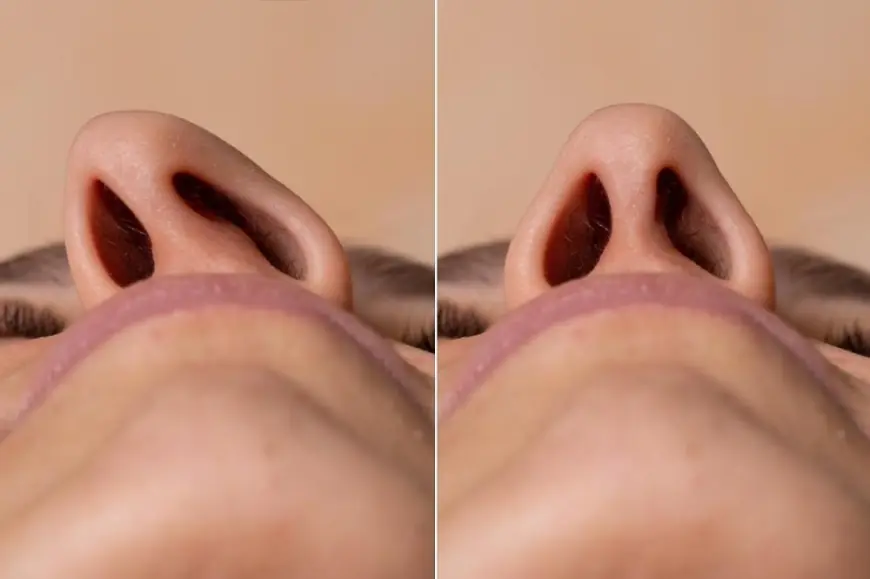Can Rhinoplasty Make My Nose Smaller?
Rhinoplasty corrects cosmetic concerns or breathing issues, creating a more symmetrical and attractive nose.

Rhinoplasty is a widely sought-after cosmetic procedure for those who wish to change the shape, size, or proportions of their nose. One common concern among patients is whether rhinoplasty can make the nose smaller while keeping it in harmony with other facial features. This treatment not only addresses aesthetic issues but can also improve nasal function in some cases. The desire for a smaller, more refined nose often comes from wanting a better balance between the nose and other facial structures. By reshaping bone, cartilage, and soft tissue, this procedure can help individuals achieve their desired nose size without compromising natural beauty. Many people search for answers about how nose reshaping surgery works and what kind of results they can expect when it comes to reducing nasal size.
What is the treatment and how it works?
Rhinoplasty In Dubai(تجميل الأنف في دبي) is a surgical procedure designed to modify the nose’s shape, size, and proportions. For patients seeking a smaller nose, the process may involve reducing the bone or cartilage to create a more refined appearance. There are two main approaches: open rhinoplasty, where the surgeon makes a small incision at the base of the nose for better visibility, and closed rhinoplasty, where all incisions are made inside the nostrils. During the procedure, the underlying nasal structure is carefully sculpted to create a smaller and more proportionate nose that complements the patient’s facial profile. In cases where breathing issues exist, functional rhinoplasty techniques can also be incorporated.
Importance of treatment:
A nose that feels too large or prominent can greatly affect a person’s self-image and confidence. Rhinoplasty for reducing nose size can restore facial balance, enhance aesthetics, and make features appear softer and more proportionate. It’s not just about looking different—it’s about achieving a version of yourself that feels natural and confident. For some, the change is subtle, while for others, it can be a dramatic transformation that brings long-term satisfaction. Additionally, improving nose proportions may enhance the overall facial symmetry, which plays a major role in perceived attractiveness.
Types of treatment:
There are different techniques for reducing nose size through rhinoplasty:
-
Dorsal hump reduction – Shaving down excess bone or cartilage on the bridge to create a smoother profile.
-
Tip refinement – Reshaping the nasal tip for a smaller and more defined appearance.
-
Nostril narrowing (alar base reduction) – Reducing the width of nostrils to match the smaller nasal structure.
-
Comprehensive size reduction – Combining multiple techniques to achieve the desired proportion.
Each type depends on the patient’s anatomy, goals, and whether functional improvements are also needed.
Preparation and aftercare:
Before undergoing nose reduction rhinoplasty, patients typically go through a detailed consultation, physical examination, and imaging to ensure realistic expectations. Pre-surgery guidelines often include avoiding certain medications, refraining from smoking, and following specific dietary advice.
After the procedure, swelling and bruising are normal and gradually improve over a few weeks. Key aftercare tips include:
-
Keeping the head elevated while sleeping.
-
Avoiding strenuous activities until cleared by the surgeon.
-
Using cold compresses to reduce swelling.
-
Following all wound care and medication instructions.
Healing takes time, and the final refined nose shape may take several months to fully appear.
Ideal candidate:
The best candidates for nose size reduction surgery are individuals who:
-
Feel their nose is too large or dominant for their face.
-
Have reached full facial growth (usually age 16–18+).
-
Are in good physical health.
-
Have realistic expectations about the outcome.
-
Seek improvement rather than perfection.
How to choose the right clinic?
Selecting the right place for your rhinoplasty procedure is essential for achieving the desired results. Look for:
-
Verified before-and-after photos of previous patients.
-
Clear communication about the process, risks, and recovery.
-
A detailed treatment plan tailored to your facial structure and goals.
-
Transparent discussion about the techniques used.
Risks:
While Rhinoplasty(تجميل الأنف) for nose reduction is generally safe, it does carry potential risks such as:
-
Swelling and prolonged bruising.
-
Nosebleeds or infection.
-
Breathing difficulties in rare cases.
-
Dissatisfaction with the results, sometimes requiring revision surgery.
Benefits:
The benefits of nose reduction rhinoplasty include:
-
Improved facial symmetry.
-
Increased self-confidence.
-
Permanent size and shape improvements.
-
Enhanced breathing if functional corrections are made.
FAQs:
Does rhinoplasty always make the nose smaller?
No, rhinoplasty can either make the nose smaller, larger, or simply reshape it depending on your goals.
Will my nose look natural after surgery?
With a skilled approach, results are designed to look proportionate and natural to your face.
How long does it take to see final results?
Initial improvements are visible in a few weeks, but full results may take up to a year.
Can I combine rhinoplasty with other facial procedures?
Yes, it’s sometimes combined with chin augmentation or other cosmetic enhancements for better balance.
Conclusion:
If you’ve ever wondered, can rhinoplasty make my nose smaller, the answer is yes—when performed with precision and an understanding of facial harmony, it can reduce nose size while maintaining a natural appearance. This procedure is tailored to your facial proportions, ensuring the changes feel balanced and authentic. From addressing dorsal humps to refining the nasal tip, nose reduction rhinoplasty offers both aesthetic and emotional benefits. By selecting the right approach and following proper aftercare, patients can enjoy long-lasting results that enhance both their looks and confidence.
What's Your Reaction?
 Like
0
Like
0
 Dislike
0
Dislike
0
 Love
0
Love
0
 Funny
0
Funny
0
 Angry
0
Angry
0
 Sad
0
Sad
0
 Wow
0
Wow
0

















































